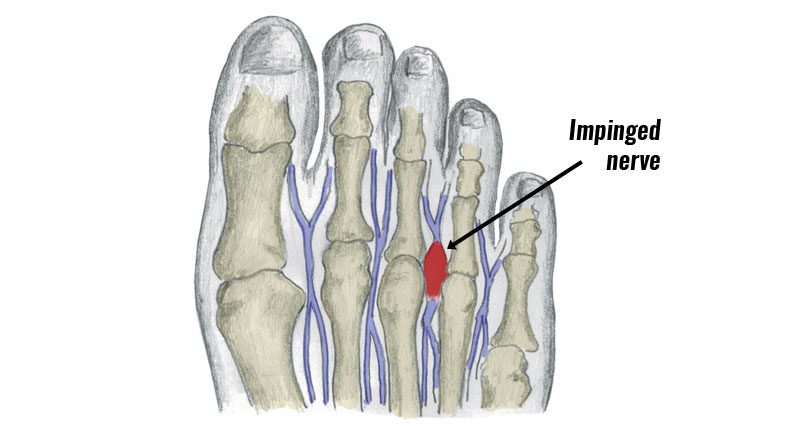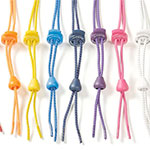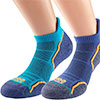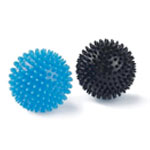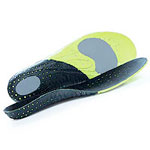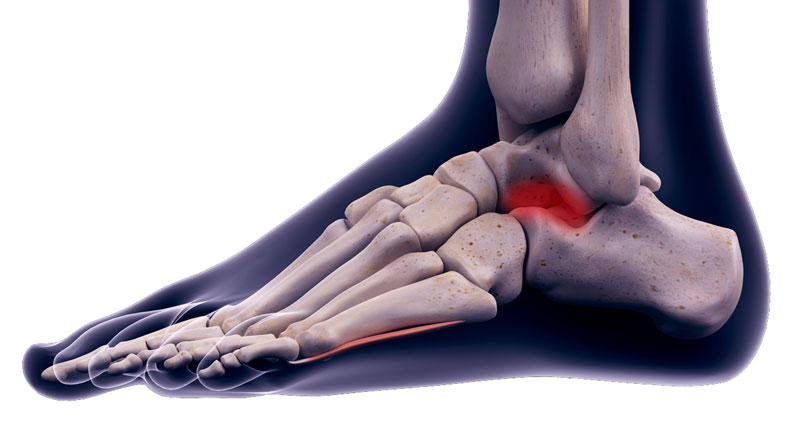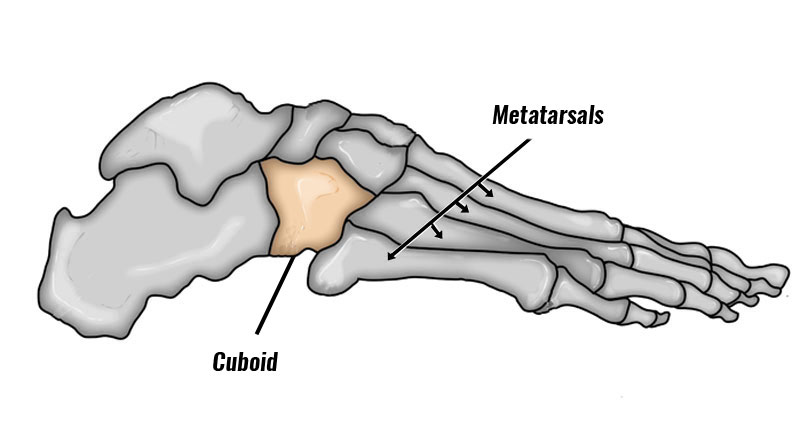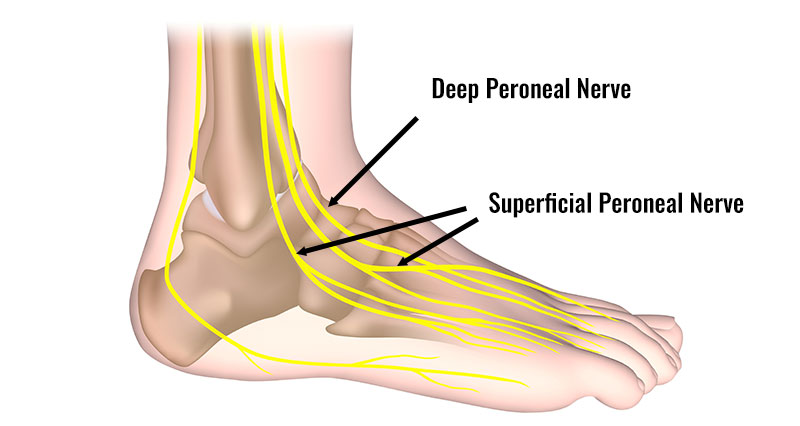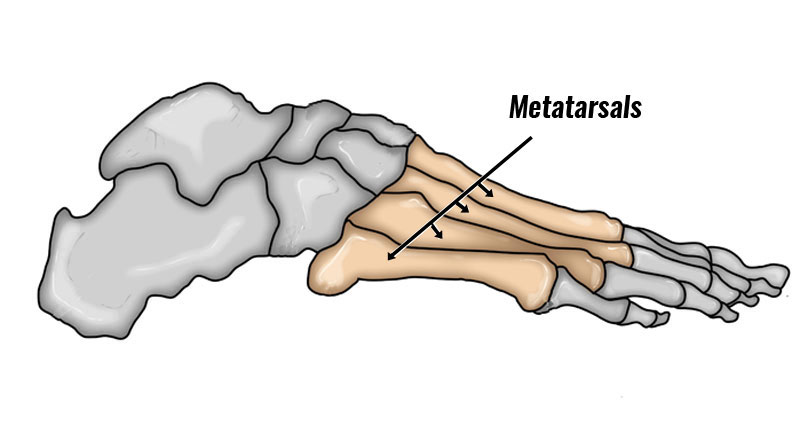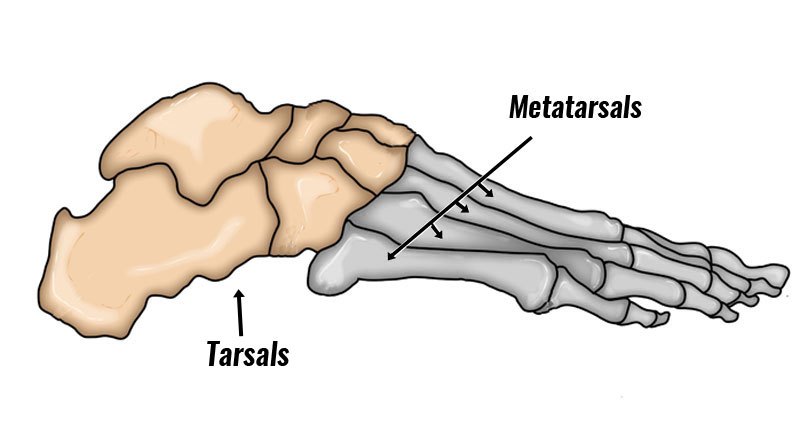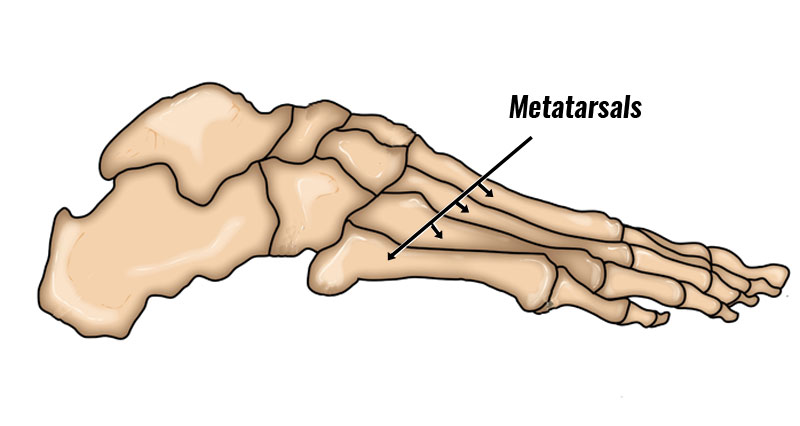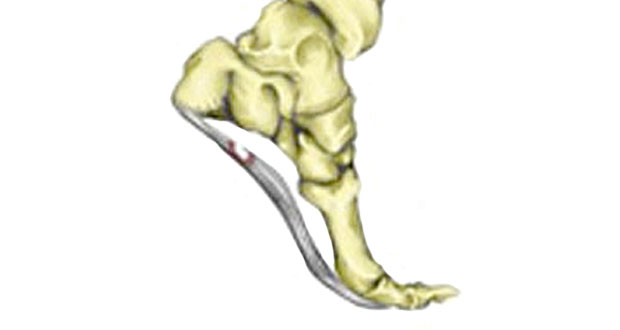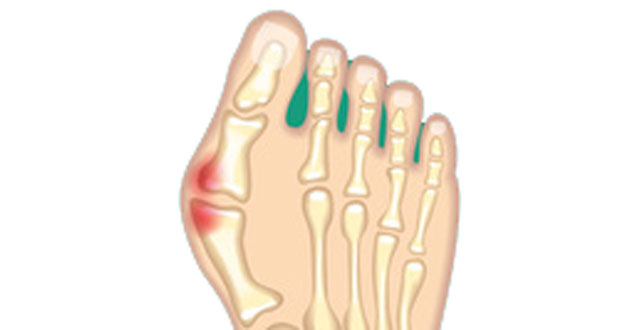Morton’s neuroma or Morton’s syndrome is a compressed nerve in your forefoot, causing pain between the third and fourth toes. Here we explain the symptoms, causes, and treatment, as well as how to apply tape to relieve pain.
Medically reviewed by Dr Chaminda Goonetilleke, 20th Jan. 2022
Morton’s neuroma symptoms
- Symptoms typically include foot pain, often with pins and needles.
- Pain is located on one side of your middle toe and the adjacent side of the next toe.
- Weight-bearing, especially pushing up on your forefoot will make symptoms worse.
Assessment tests
A professional therapist may squeeze your forefoot. If pain is produced then it is an indication you have Morton’s syndrome.
The aim is to simulate compression of the nerve and as a result, reproduce the symptoms.
Your therapist will press in between the third and fourth metatarsals, whilst squeezing the metatarsals (forefoot bones) together. This compresses the nerve and triggers pain/tingling.
They may also squeeze with their finger and thumb on the top and sole of the foot which compresses the nerve from top to bottom. If the pain is reproduced then Morton’s syndrome is a likely diagnosis.
Other things to look at whilst assessing a suspected case of Morton’s neuroma include:
- Overpronation at the foot where the foot rolls in or flattens. This can cause the bones of the forefoot to compress the nerve over time.
- Ankle mobility should be assessed, especially to identify tight calf muscles, which may contribute to overpronation and poor foot biomechanics.
What is Morton’s neuroma?
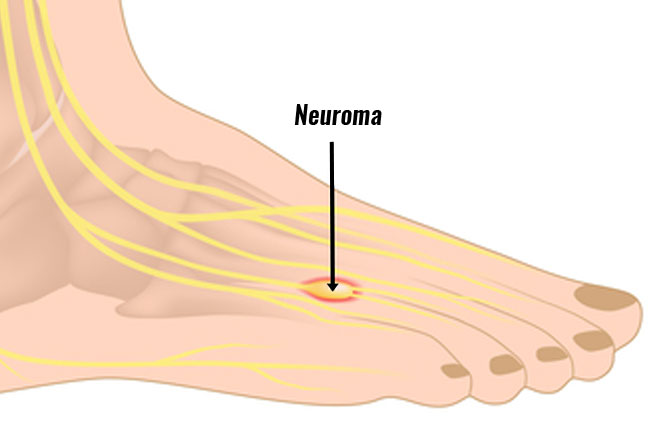
Nerves which transmit messages to the brain from the toes pass between the metatarsal bones in the foot. If the arch in the foot is weak then this can cause the metatarsal bones to pinch the nerve.
This causes it to become inflamed. Once it becomes inflamed, the tissues thicken, making impingement more likely. It’s a vicious circle.
This is most likely to happen between the 3rd and 4th metatarsal bones, causing pain, tingling, pins and needles or numbness on the inside of the two toes which the nerve supplies.
What causes Morton’s neuroma?
- Morton’s neuroma can be caused by ill-fitting shoes which are too tight in the forefoot. This compresses the forefoot and pinches the nerve.
- Activities which involve spinning on the ball of the foot such as golf and tennis.
- Sometimes it is caused by a benign tumour on the plantar digital nerves. However, this is not a true neuroma, more of a swelling of the nerves.
- Scar tissue surrounding the nerve from previous or associated injury can also be a factor.
Treatment for Morton’s neuroma
Rest
This may mean complete rest or active rest. Continuing with normal training will increase pain and inflammation and prevent your foot from healing.
Metatarsal support pad
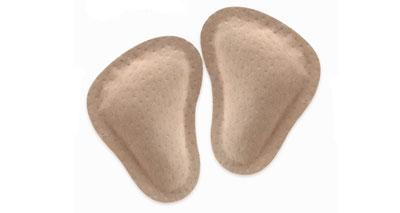
Wear a metatarsal pad. These are pads which are inserted into shoes and positioned under the forefoot.
This raises and supports the forefoot arch and spreads your metatarsal bones. As a result, this increases space for the nerve and releases pressure, reducing pain and allowing your foot to heal.
Orthotic insoles
Orthotic inserts may be required to correct any biomechanical dysfunction of the foot. In particular, if your foot overpronates or rolls in too much then this will flatten your arch.
As a result, the metatarsal bones in the forefoot may compress, pinching the nerves.
This will not directly reduce inflammation on its own but may take the pressure off the nerve allowing your foot to heal and preventing the injury from returning.
Medication
A doctor, physiotherapist or podiatrist may prescribe anti-inflammatory medication such as ibuprofen.
Reducing the inflammation and any swelling will allow more space for the nerve and reduce pressure and pain. Ibuprofen should not be taken if you have asthma.
Exercises
Exercise to strengthen the arch of your foot can help prevent Morton’s neuroma from returning in the future.
- More on Morton’s neuroma exercises
Surgery
For severe or stubborn cases surgery may be indicated. Surgery for Morton’s neuroma consists of either a decompression, where more space is created for the nerve or a resection, where this part of the nerve is removed completely.
This will result in some permanent minor numbness. Success rates for surgical procedures to treat Morton’s neuroma have a high success rate.
References & further reading
- Owens R, Gougoulias N, Guthrie H et al. Morton’s neuroma: clinical testing and imaging in 76 feet, compared to a control group. Foot Ankle Surg 2011;17(3):197–200.
- Bignotti B, Signori A, Sormani MP et al. Ultrasound versus magnetic resonance imaging for Morton neuroma: systematic review and meta-analysis. Eur Radiol 2015;25(8):2254–62
- Markovic M, Crichton K, Read JW et al. Effectiveness of ultrasound-guided corticosteroid injection in the treatment of Morton’s neuroma. Foot Ankle Int 2008;29(5):483–7.
